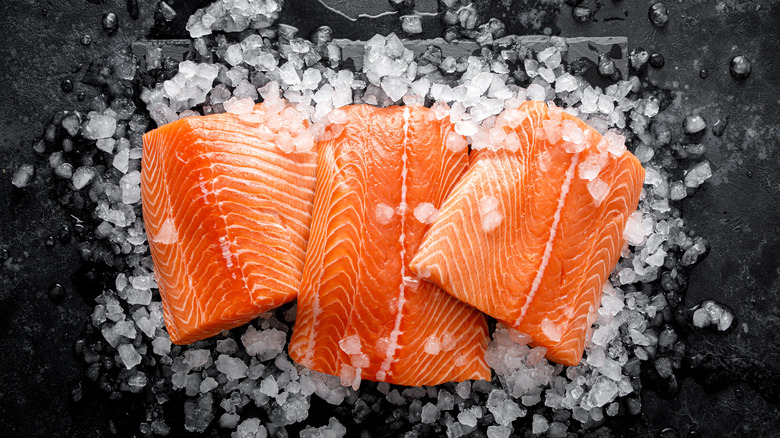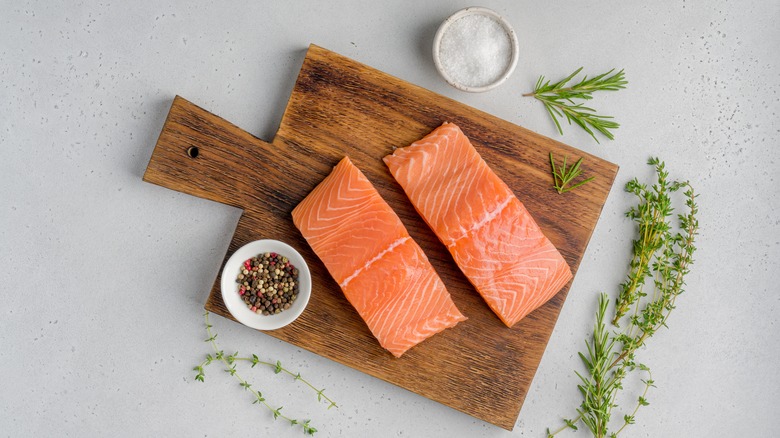Why You Shouldn't Only Pay Attention To Color When Buying Salmon
Of all the varied flavors and deep colors of the wide world, salmon stands (or swims?) as a prime combination of delicious taste and stunning visuals. You can prepare a quality salmon in nearly every which way. Chefs all around the world treat salmon dishes with the utmost respect, and so should you. When browsing for such a sought after ingredient, it's good to be familiar with what signs to look for so you get the best bang for your buck.
Epicurious recommends first doing a bit of research to read up on the types of salmon you're looking to prepare, then really examining your fish closely before purchasing. According to Kitchn, many people are told to look at the coloring of the salmon flesh, but lots of different kinds of salmon are naturally different shades of pinkish orange (the color often referred to as "salmon"). So, the color of the flesh will only really indicate the type of salmon you're looking at. There are better ways to evaluate salmon.
Using your other senses
What you really want to be looking for is just blemishes, cuts, and irregularities in the flesh of the filets and the fish as a whole. Your salmon flesh and skin should also not appear dry at all. Instead, it should look and feel slick or wet to the touch (and, of course, asking questions of your fish-monger is always a good idea).
Inspecting the flesh for discoloration is good, but really, you just have to get your nose in there. According to Oshen Salmon, you can also do a smell test on frozen salmon just as well as fresh salmon. It may seem kind of backwards, but salmon shouldn't smell fishy; it should smell lightly of the sea. Healthy salmon flesh will also feel firm and bouncy rather than mushy, say Oshen Salmon. If your salmon is falling apart at the touch, Oshen Salmon notes this is a sign that your fish is not safe to eat.

